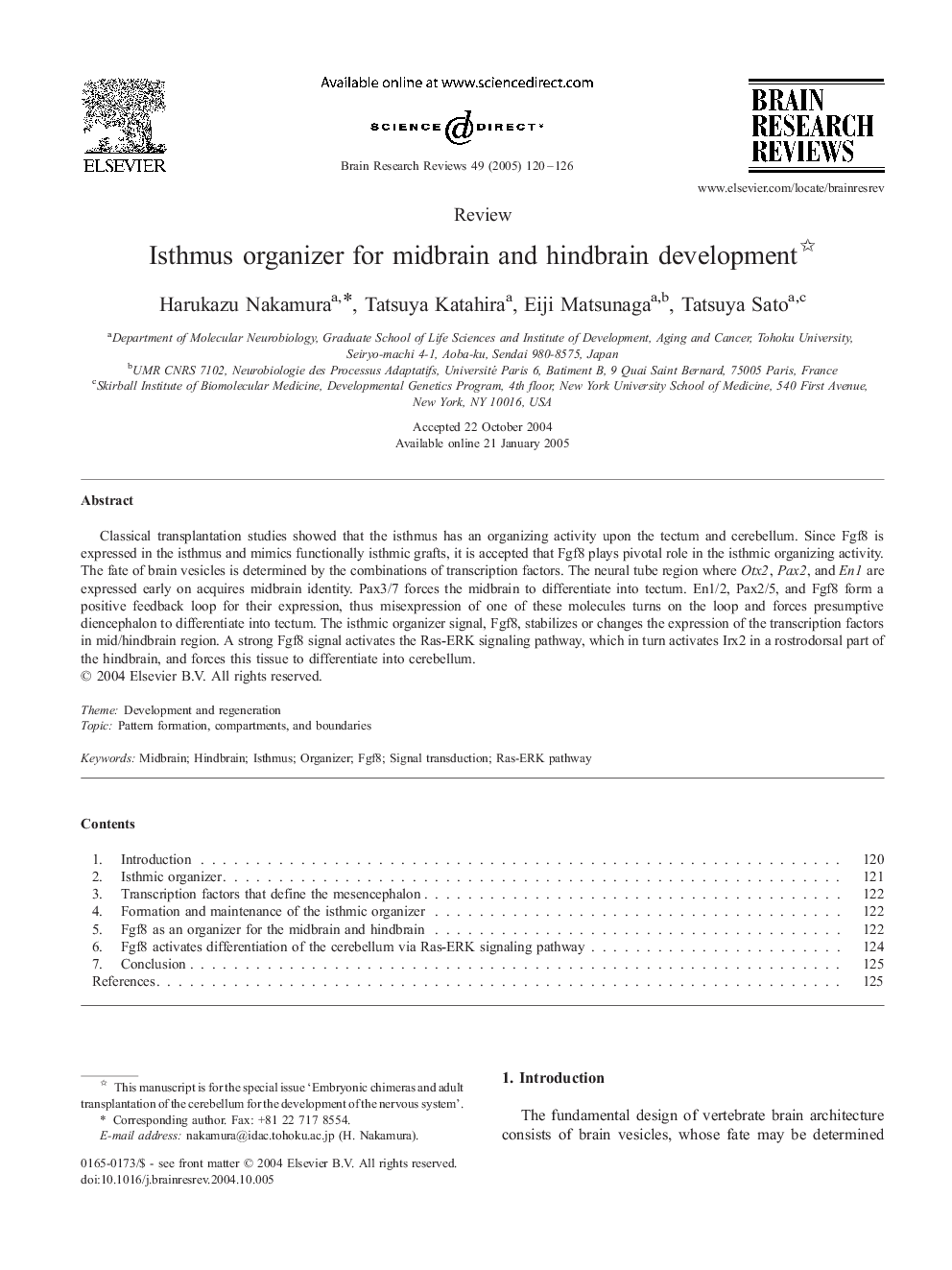| Article ID | Journal | Published Year | Pages | File Type |
|---|---|---|---|---|
| 9423069 | Brain Research Reviews | 2005 | 7 Pages |
Abstract
Classical transplantation studies showed that the isthmus has an organizing activity upon the tectum and cerebellum. Since Fgf8 is expressed in the isthmus and mimics functionally isthmic grafts, it is accepted that Fgf8 plays pivotal role in the isthmic organizing activity. The fate of brain vesicles is determined by the combinations of transcription factors. The neural tube region where Otx2, Pax2, and En1 are expressed early on acquires midbrain identity. Pax3/7 forces the midbrain to differentiate into tectum. En1/2, Pax2/5, and Fgf8 form a positive feedback loop for their expression, thus misexpression of one of these molecules turns on the loop and forces presumptive diencephalon to differentiate into tectum. The isthmic organizer signal, Fgf8, stabilizes or changes the expression of the transcription factors in mid/hindbrain region. A strong Fgf8 signal activates the Ras-ERK signaling pathway, which in turn activates Irx2 in a rostrodorsal part of the hindbrain, and forces this tissue to differentiate into cerebellum.
Keywords
Related Topics
Life Sciences
Neuroscience
Neuroscience (General)
Authors
Harukazu Nakamura, Tatsuya Katahira, Eiji Matsunaga, Tatsuya Sato,
